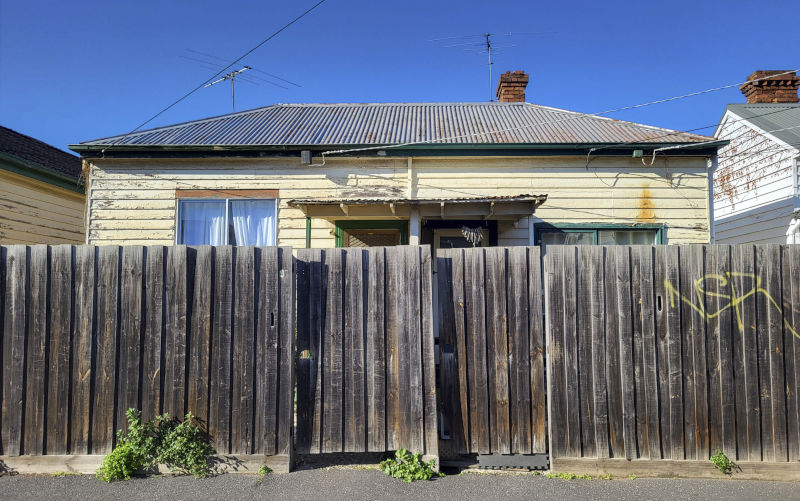Aboriginal housing: Australias biggest policy failure?
May 31, 2023
The inadequate if not negligent response of governments around Australia to the critical issue of Aboriginal housingperhaps the countrys biggest policy failureputs into sharp focus why a Voice to Parliament may help elevate the case for urgent action.
Governments have moved away from specific programs to address the acute housing needs of First Peoples, even though they have made commitments under Closing the Gap agreements to improve Aboriginal housing.
Incredibly, the state of Aboriginal housing is often at its worst in resource-rich regions where Aboriginal land generates massive wealth. This is apparent from even a cursory look at the Aboriginal communities of the Pilbara iron ore region of Western Australia, where much of the investment in housing took place before the states coffers were flooded with mining royalties.
Typically, an Aboriginal home in remote or regional Australia was built in the 1970s or 1980s and has had very little spent on it since then. It most likely has at least one major structural fault such as cracked walls or floors and is over-crowded. It might have had air conditioning added to help cope with more extreme temperatures, but its unlikely to have solar panels to help reduce soaring energy costs.
With Aboriginal remote communities on the front line of climate changefacing rising temperatures and sea levels, and more extreme weather eventshousing is emerging as a key issue, and yet governments across Australia lack any sense of urgency.
Gudanji-Arrernte elder Pat Turner, the co-chair of the Joint Council on Closing the Gap, has had her megaphone out on this issue, and is particularly scathing of the WA government.
We are sick and tired of all the grey areas and the buck passing between Commonwealth and States. Look at Western Australia. Let me point out Western Australia and all you mob in the mining industry here, she told a post-election forum last year.
Youve all made billions and billions and billions of dollars off of Aboriginal land. And Aboriginal people in WA live in the most appalling conditions today and they do not have the support of the Western Australian government.
The Rudd government responded to this appalling situation by developing the National Partnership Agreement on Remote Indigenous Housing, which provided $5.5 billion over 10-years to build and renovate 11,500 homes across 300 communities. This led to a 6 percentage point fall in overcrowding to 21 per cent of dwellings.
But this program was ended by Malcolm Turnbull in 2018 and has not been revived under the new Labor government. This is despite the issue of overcrowded housing emerging as a major factor in the spreading of the COVID virus.
Over the past six months I put questions to the WA Housing Minister John Carey on investment in Aboriginal housing, the age of the housing stock, and why WA had the most over-crowded Aboriginal housing in Australia. The questions were referred to the Department of Communities which said initially that this information wasnt readily available. Finally, it said no such data existed because Aboriginal people were not required to identify themselves as social housing tenants.
The WA government has funded a $2.6 billion social housing program but it cant say how much of this has addressed the housing needs of First Nations people. The Department said that 100 social housing dwellings have been added in the Pilbara region since 2017, but we dont know how many of these accommodate Aboriginal families.
Federal Labor is little different. Its proposed $10 billion Housing Australia Future Fund (HAFF) allocates just $200 million, or just 2 per cent of the fund, for the repair, maintenance and improvement of housing in remote Indigenous communities, according to a comment from Housing Minister Julie Collins. The recent budget provided funding to the Northern Territory of $111 million for remote housing, and even though the funding lasts just one year the Government said this was a partnership.
Better Aboriginal housing is also needed to address health and socio-economic welfare. The Productivity Commissions latest report on Indigenous disadvantage cites a mountain of research over many years which shows that poor quality and overcrowded housing are factors in high rates of family and community violence, together with chronic health conditions.
Inadequate housing explains why First Peoples continue to suffer from developing world diseases such as ear infections and rheumatic heart disease (RHD), the latter being 17-times more prevalent among Aboriginal and Torres Strait Islander Australians, many of them children, living in remote areas.
The commission cites ABS data showing that one in three Indigenous homes in 2018-19 had major structural problems, an increase of 7% compared with 2014-15. The most commonly reported problem was major cracks in walls or floors, the report said.
All Australian governments now have commitments on housing as part of their Closing the Gap agreements, but their targets are unlikely to be achieved owing to lack of funding. The national CTG agreement aims to reduce overcrowding from 21 to 12 per cent of homes by 2031, which is unlikely to be achieved without specific new funding.
The Aboriginal voice or peak body for housing, NATSIHA, said the overall effort by Australians governments had been patchy and fell short of what was needed. NATSIHA had been involved in the discussions about the HAFF with the Federal government, but it appears that no specific funding commitment has been made to date.
Appropriate levels of access to these funds and programs is critical to ensuring positive impacts can be achieved for the Closing the Gap targets, NATSIHA said in a statement for this article.
The failure of governments to properly support Aboriginal housing is particularly egregious when you consider that much of Australias mineral wealth is extracted from or near Aboriginal land. It just shows that an increasingly wealthy Australia is becoming less concerned about the welfare of the First Australians.
